Selecting the right water flow meter is crucial for accurate measurement in industrial, municipal, and residential applications. But with so many options available, how do you ensure the best choice?
What is a water flow meter and how does it work?
Water flow meters measure the amount of water that moves per unit of time. These meters are usually connected directly to the pipe and measure the amount of water flowing through the pipe each time. The most common units are liters or cubic meters per minute (L/min = m 3 /min), or gallons per minute (gal/min) to measure those units that fall behind the metric system.
Several designs and types of water flowmeters exist, but they all achieve the same result – the direct or indirect measurement of the amount of water flowing. Flow meters utilize a variety of technologies from mechanical gears to electromagnetic technology to ultrasonic technology to measure this water flow.
Imagine a classic water wheel being pushed by a river and imagine that this wheel is now located inside a water pipe. Depending on how fast the wheel is spinning, it will correlate to a specific flow rate of water within the pipe. This is an example of a direct measurement of water through a mechanical flow meter.
Basically, by measuring the time it takes for a certain volume of water to pass through a flow meter size, you can relate that number to liters per minute (the flow meter will perform this calculation). The advantages of each approach technique depend on the accuracy, maintenance and environment in which these meters operate.
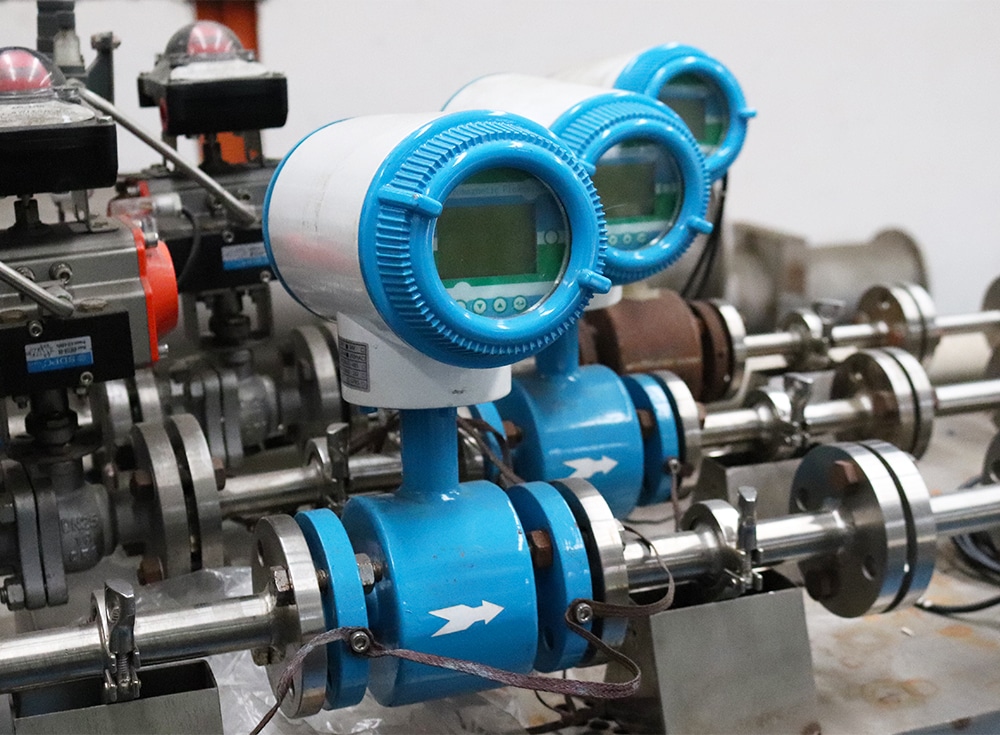
Why use water flow meter?
Water flow meters are essential for many areas where liquids flow and the amount of liquid is necessary to measure. For example, the amount of water used in a home so the water company can charge for the amount of water used. Many chemical manufacturing processes require extremely accurate flow rates and liquid volumes to produce the proper reactions and finished products. Waste water treatment plants need to know how much water is flowing into and out of their limited capacity tanks to avoid overflow or underutilization of their equipment.
In fact, water flowmeters can be used in any industry, such as medical device manufacturing or hydroponics. Even backyard pool setups can benefit from flow meters to protect pool pumps from unsafe operating conditions, for example.
What are the different types of water flowmeters?
Several different types of flow meters exist, all of which were created to measure the flow of liquids and work in slightly different ways. We will focus on the most common flow meters and their areas of application.
Mechanical or positive displacement flow meters
A mechanical flow meter utilizes a physical wheel or gear that rotates due to the flow of water. As a result, the gear rotates and that rate is proportional to the flow of water and can be converted to volumetric flow, which is the goal of the flow meter.
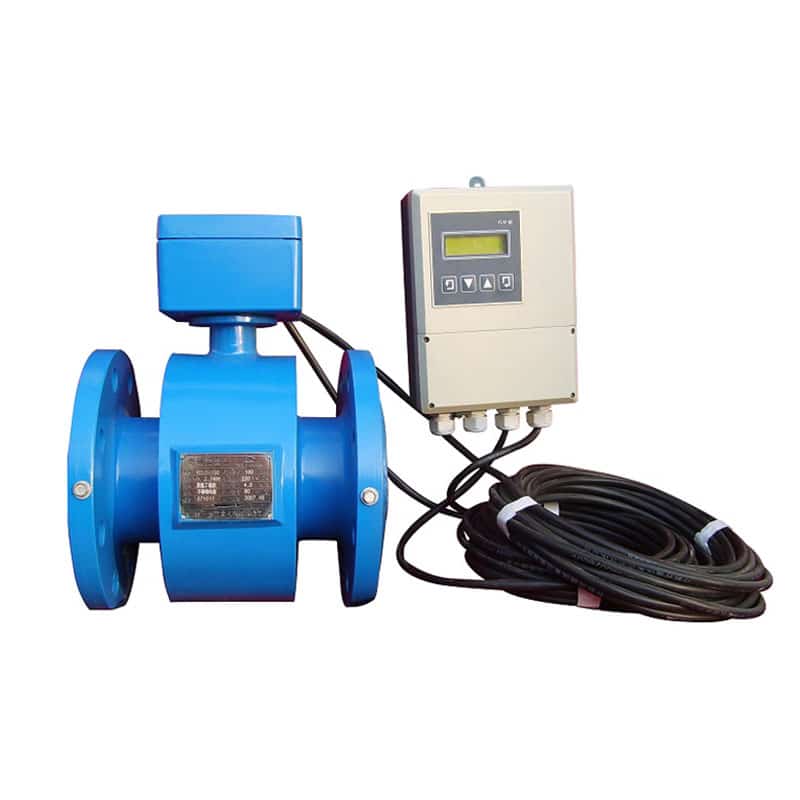
Mechanical flow meters are most commonly used because of their simplicity and ease of conceptual understanding. When people think of a flow meter, they usually think of a paddle wheel, which is the primary concept of a mechanical or positive displacement flow meter. However, since the physical part of the meter is rotated by water, this can degrade and damage a mechanical flow meter fairly easily if the water is dirty or contains a lot of contaminants. Therefore, mechanical flow meters are best suited for clean water processes or applications.
Vortex flow meters
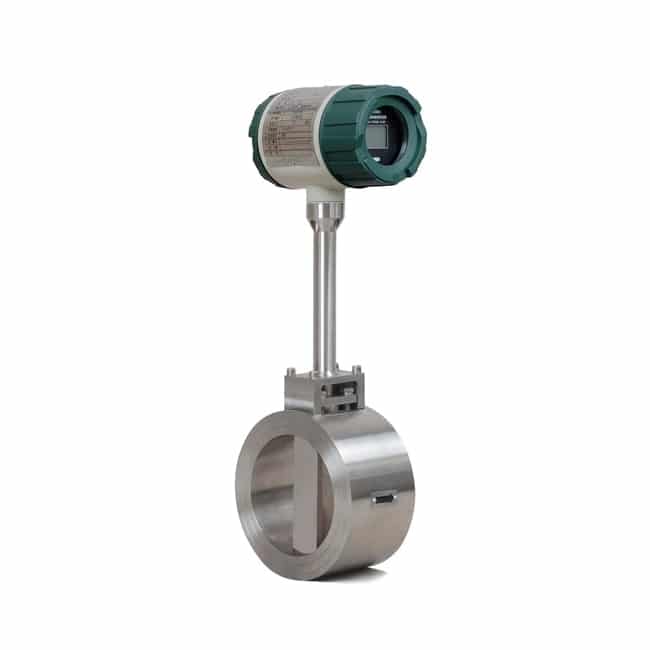
Vortex flow meters take the flow measurement process a step further. These meters measure the flow of water with some sort of obstruction inside the meter, like a fallen tree impeding the flow of a river. This obstruction, or tag, is usually a flexible material that vibrates back and forth, producing a frequency proportional to the volume flow rate.
Because it is only an oscillating tag, rather than an entire gear, vortex flow meters can be used in a wider range of water environments because they are less susceptible to damage by “dirty” water. These meters can also measure temperature, pressure and other variables simultaneously.
Electromagnetic flow meter
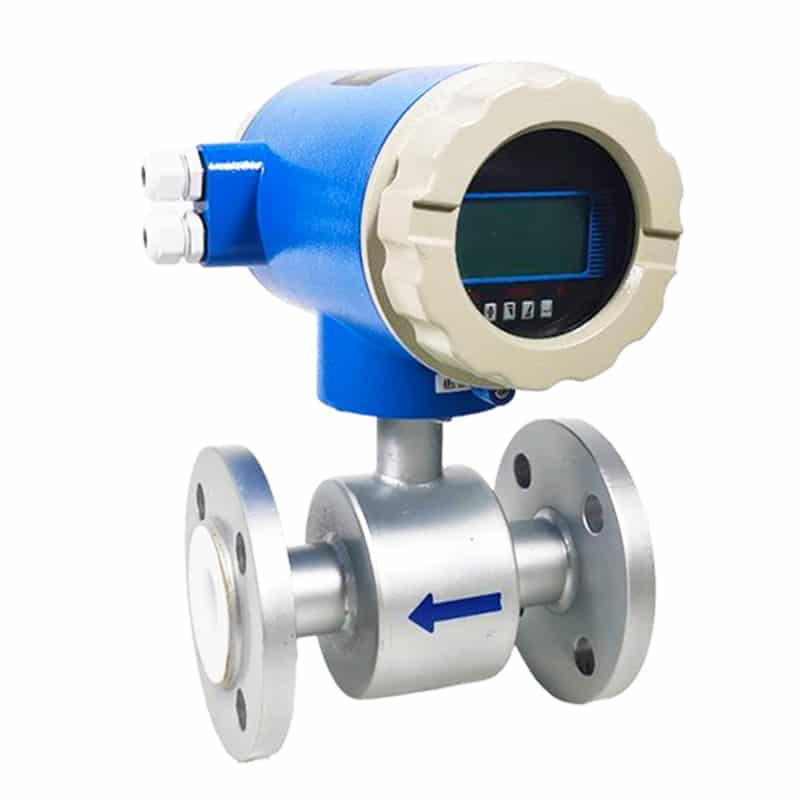
Electromagnetic flowmeters use a magnetic field generated in flowing water to measure its flow rate. These meters eliminate the physical components suspended in the water, but are much more expensive. However, the biggest drawback is that this magnetic concept is only applicable to conductive water and liquids, otherwise metal pipes will interfere with the signal and the volume flow will be incorrect. Either way, this is most commonly used in industrial environments because the cost is much higher; electromagnetic flow meters offer a good alternative for wastewater treatment plants because physical flow meters are easily damaged in dirty water, but the water is conductive due to all the contaminants.
Ultrasonic flow meter
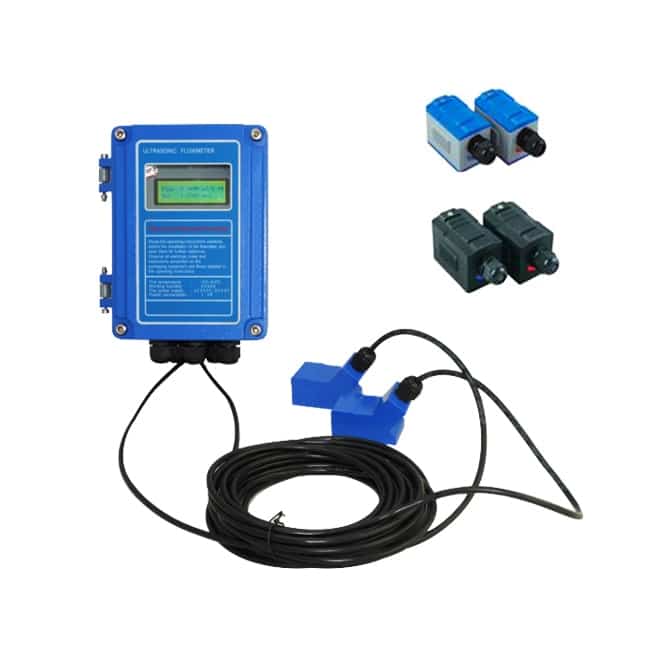
Ultrasonic flowmeters also take a non-interference approach by eliminating flow meter components directly in the water. The ultrasonic principle is like radar, reflecting sound waves in two opposite directions (downstream and upstream) to measure the time offset and thus the volume flow. A lot of math and angles are involved, but the result is a very low-maintenance meter that can measure flow and can be clamped to the outside of the pipe – avoiding any in-line pipe installation on some models.
Single and multi-Jet flow meters
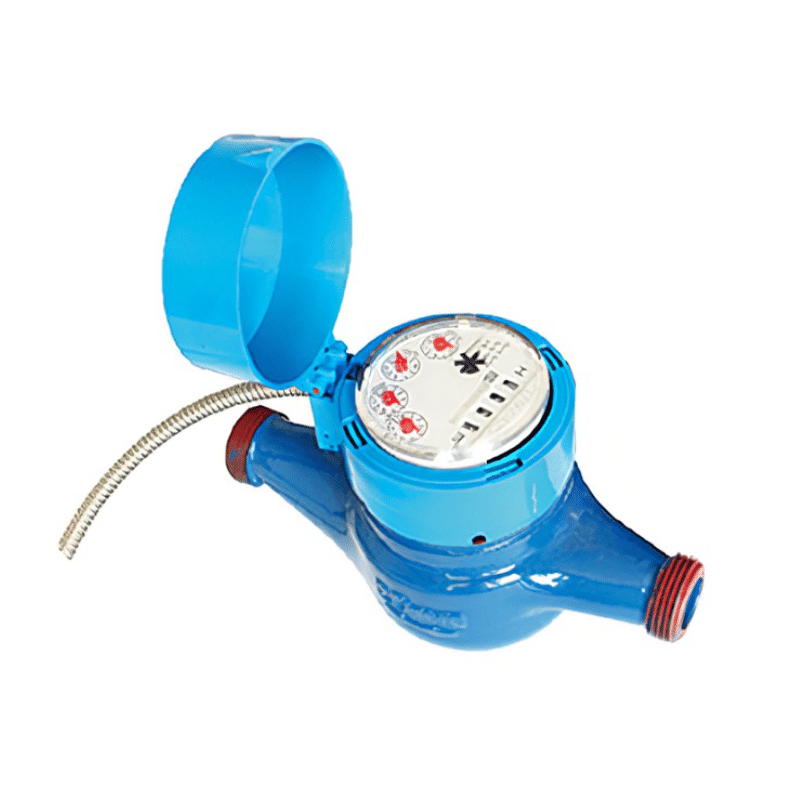
Jet flow meters are best suited for small-scale applications, as they cannot operate at high flow rates or large flow rates. The meter redirects water to an internal propeller and measures the speed at which that propeller blade rotates, much like a mechanical flow meter. Again, because the components are in direct contact with the water, the meter is best suited for residential and clean water applications.
Turbine Flow Meters
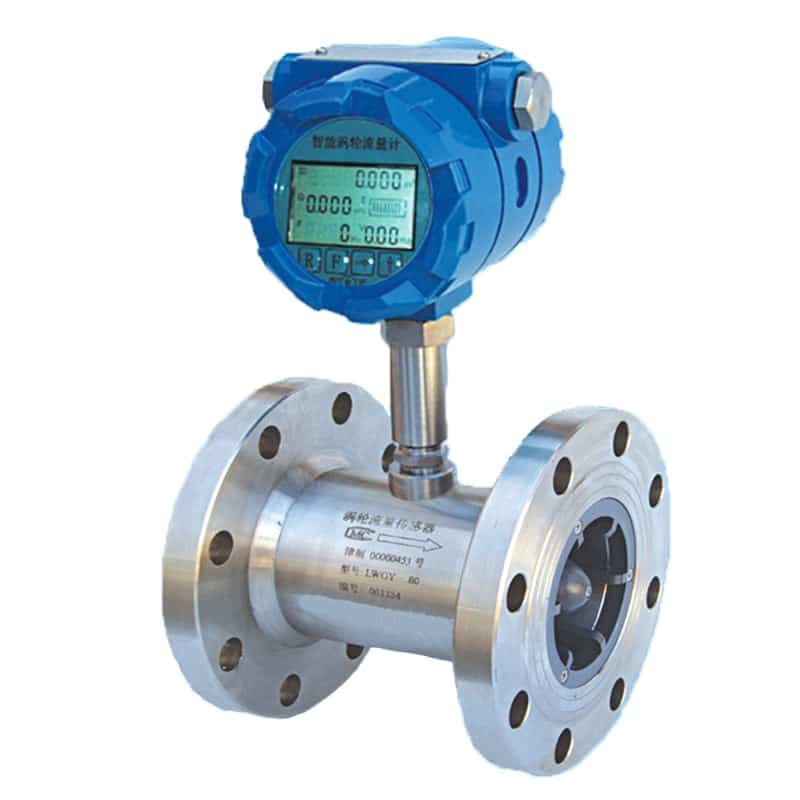
Turbine flowmeters find a happy medium between a simple concept at a low price and a complex technology at a high price. They are best suited for inline pipe installations (as they require straight pipe in and out for best performance) and are available in a wide range of pipe sizes.
Comparison of Flow Meter Calibration Methods and Error Ranges
| Flow Meter Type | Calibration Methods | Error Range | Influencing Factors |
| Electromagnetic Flow Meter | Wet calibration, dry calibration, zero-point adjustment, on-site comparison | ±0.2% to ±0.5% (high precision up to ±0.15%) | Conductivity, zero drift |
| Ultrasonic Flow Meter | Standard flow comparison, zero-point adjustment, signal inspection | ±0.5% to ±2% (Transit-time method); ±1% to ±5% (Doppler method) | Bubbles, impurities affecting ultrasonic signals |
| Turbine Flow Meter | Standard flow comparison, pulse signal adjustment, temperature/pressure compensation | ±0.5% to ±1% (high precision up to ±0.2%) | Viscosity changes, bearing wear |
| Rotameter (Variable Area Flow Meter) | Direct comparison, zero-point check, pressure compensation | ±1% to ±5% | Tilt angle, bubbles affecting float movement |
| Mechanical Flow Meter | Standard flow comparison, flow curve adjustment, mechanical wear inspection | ±1% to ±2% (high precision up to ±0.5%) | Mechanical wear, fluid viscosity, particle blockage |
| Positive Displacement Flow Meter | Volume calibration, leakage inspection, standard flow comparison | ±0.2% to ±0.5% (high precision up to ±0.1%) | Sealing integrity, fluid viscosity, mechanical friction |
| Single Jet Flow Meter | Standard water flow comparison, zero-point adjustment, pulse signal calibration | ±1.5% to ±3% | Low accuracy at small flow rates, jet channel wear |
| Multi Jet Flow Meter | Standard flow comparison, flow distribution balance adjustment, magnetic interference check | ±1% to ±2% | Flow fluctuations affecting jet distribution |
Conclusion
Overall, choosing the best water flow meter for your particular application will depend on the cleanliness of the water, budget and accuracy of the flow measurement. For dirty water containing large particles, magnetic, ultrasonic and vortex meters are preferred to prevent many maintenance challenges. For smaller, cleaner water applications, rely on turbine, mechanical and jet flow meters to accurately measure flow.
If you would like to learn more about other water quality measurements, features or applications for water flow meters, please feel free to contact Apure’s dedicated team.
More articles on other flow meters:
Sewage flowmeter
Chilled water flow meter
Electronic flow meter
Oil and gas flow meter
